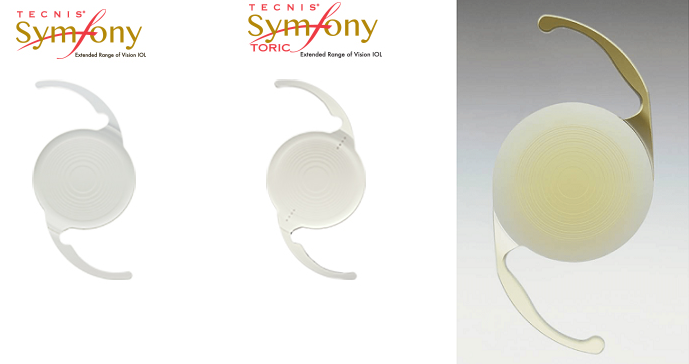
Cataract
We have proven record of performing
over 21000 successful cataract surgeries till date
What is Lens?
The lens is a clear part of the eye that helps to focus light, or an image, on the retina. The lens lies behind the iris and the pupil. It works much like a camera lens. It focuses light onto the retina at the back of the eye, where an image is recorded The retina is the light-sensitive tissue at the back of the eye. The lens also adjusts the eye's focus, letting us see things clearly both up close and far away.
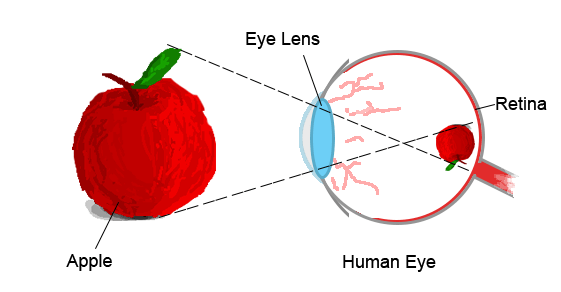
How Lens Captures the images?
The lens is made of mostly water and protein. The protein is arranged in a precise way that keeps the lens clear and lets light pass through it. In a normal eye, light passes through the transparent lens to the retina. Once it reaches the retina, light is changed into nerve signals that are sent to the brain.
Cloudy Lens Causes Cataract...
The lens must be clear for the retina to receive a sharp image. If the lens is cloudy from a cataract, the image you see will be blurred.
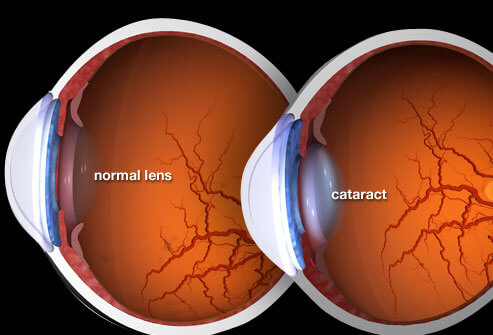
What is Cataract?
A clouding or loss of transparency of the lens in the eye as a result of tissue breakdown and protein clumping.
 Cataracts affect most people who live into an old age.
Cataracts affect most people who live into an old age.
 Symptoms include double or blurred vision and sensitivity to light and glare.
Symptoms include double or blurred vision and sensitivity to light and glare.
 The result is much like smearing grease over the lens of a camera which impairs normal vision.
The result is much like smearing grease over the lens of a camera which impairs normal vision.

What Causes Cataract?
As we age, some of the protein may clump together and start to cloud a small area of the lens. This is a cataract. Over time, the cataract may grow larger and cloud more of the lens, making it harder to see. However, other factors can contribute to cataract development, including:
 Diabetes mellitus
Diabetes mellitus
 People with diabetes are at higher risk for cataracts.
People with diabetes are at higher risk for cataracts.
 Drugs
Drugs
 Certain medications are associated with cataract development. These include:
Certain medications are associated with cataract development. These include:
1.Corticosteroids.
2.Chlorpromazine and other phenothiazine-related medications.
 UV Radiation
UV Radiation
 Studies show an increased chance of cataract formation with unprotected exposure to ultraviolet (UV) radiation.
Studies show an increased chance of cataract formation with unprotected exposure to ultraviolet (UV) radiation.
 Smoking
Smoking
There is possibly an association between smoking and increased lens cloudiness.
 Alcohol
Alcohol
Several studies show increased cataract formation in patients with higher alcohol consumption compared with people who have lower or no alcohol consumption.
 Nutritional deficiency
Nutritional deficiency
Although the results are inconclusive, studies suggest an association between cataract formation and low levels of antioxidants (for example, vitamin C, vitamin E and carotenoids).
Who is at risk for Cataract?
The risk of cataract increases as you get older. Other risk factors for cataract include:
Certain diseases (for example, diabetes).
Personal behavior (smoking, alcohol use).
The environment (prolonged exposure to ultraviolet sunlight/heat furnace).

What are the symptoms of a Cataract?
The most common symptoms of a Cataract are:


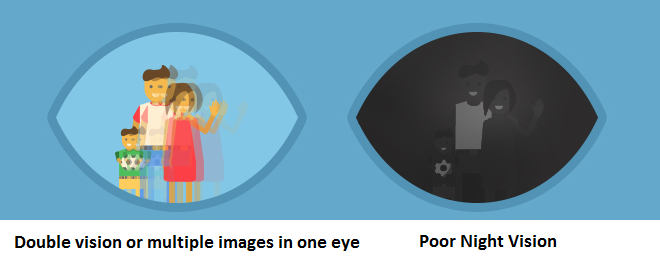
How Is a Cataract Diagnosed?
-
Patient history to determine if vision difficulties are limiting daily activities and other general health concerns affecting vision.
-
Visual acuity measurement to determine to what extent a cataract may be limiting clear distance and near vision.
-
Refraction to determine the need for changes in an eyeglass or contact lens prescription.
Supplemental testing for color vision and glare sensitivity. -
Evaluation of the lens under high magnification and illumination to determine the extent and location of any cataracts.
-
Evaluation of the retina of the eye through a dilated pupil.
Measurement of pressure within the eye. -
Measurement of pressure within the eye.
Supplemental testing for color vision and glare sensitivity.
Types of Cataract
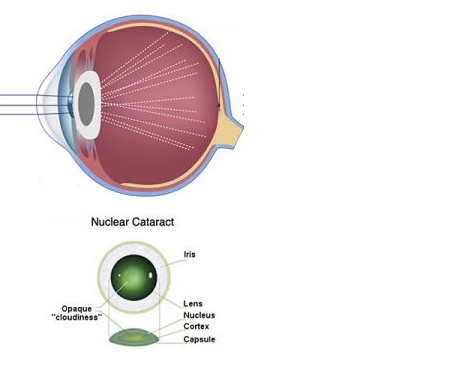
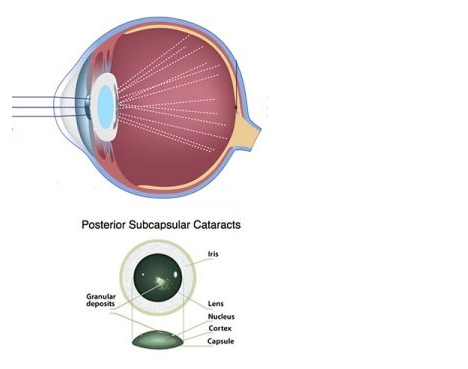
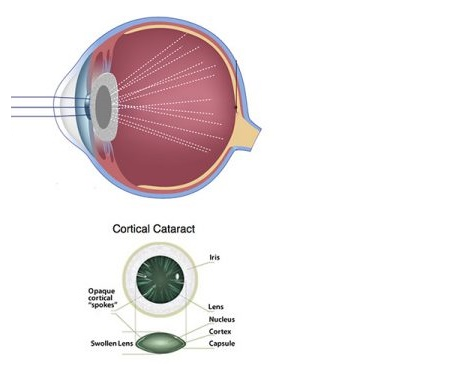
When do we recommend for Cataract Surgery?
We recommend Cataract Surgery to patients only when eyeglasses, brighter lighting, anti-glare sunglasses, or magnifying lenses do not improve patient’s vision. If you have cataracts in both eyes that require surgery, the surgery will be performed on each eye at separate times.
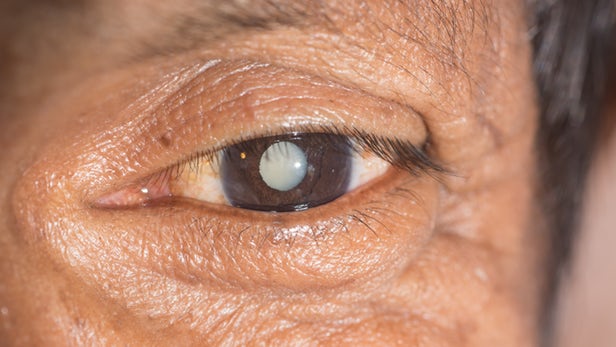
On Diagnosis?
Our Doctors at Bangalore Nethralaya assess the following parameters carefully to identify the eye related problems wholistically

Intraocular Pressure using Non-contact tonometry
Refraction using automated Refractometer
SLIT LAMP examination
Dilated fundus(Retina) Examination
Keratometry

IOL Power calculation
During Surgery
- -It is a day-care procedure.
- -Patient’s eye will be anaesthetised with topical anaesthetic drops. The area around your eye will be washed and cleansed
- -The operation usually takes around 30 minutes and is almost painless
- -During the surgery – phacoemulsification procedure- wherein cataract is removed and replaced with a foldable intra ocular lens.
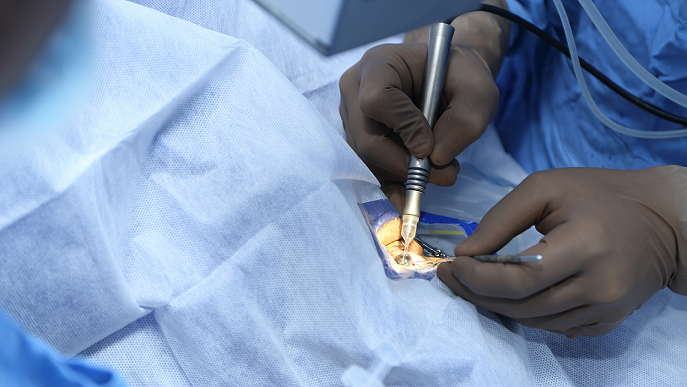
After Surgery

Patient will rest for a while. Black glasses will be provided. You can go home the same day. You will need someone to drive you home.
-
As with any surgery, cataract surgery poses risks, such as infection and bleeding. Before cataract surgery, your doctor may ask you to temporarily stop taking certain medications that increase the risk of bleeding during surgery. After surgery, you must keep your eye clean, wash your hands before touching your eye and use the prescribed medications to help minimize the risk of infection. Serious infection can result in loss of vision.
-
Some of the other eye conditions like age-related macular degeneration, glaucoma ,diabetic retinopathy etc can be present along with Cataract. During this type of scenario, appropriate decisions respective specialists will evaluate and do the needful
-
- Patient is required to rest for 1 Hour post-surgery in the hospital
- Appropriate instructions regarding post-operative eye care and eye drops is given to the patient
- Patient is prescribed eye drops for 6 weeks
- Protective Eye-wear is provided to the patient
- Follow-up visit will be scheduled on the next day of surgery
-
Itching and mild discomfort are normal after cataract surgery. Some fluid discharge is also common. Your eye may be sensitive to light and touch. After one or two days, moderate discomfort should disappear.
-

Avoid rubbing or pressing on your eye.

Use protective eye wear glasses for 2 weeks

Avoid head bath for 1 week

When you are home, try not to bend from the waist to pick up objects on the floor.

Do not lift any heavy objects.You can walk, climb stairs, and do light household chores.

In most cases,healing will be complete within eight weeks. Your doctor will schedule exams to check on your progress.
-
Following surgery, you will need to return for visits within the first few days and again within the first few weeks after surgery to assure your eye is healing properly. During this time period, you will be using several eye drops which help protect against infection and inflammation, and you will have some restrictions on activities such as lifting heavy objects and bending forward or stooping to the ground.
Within several days, most people notice that their vision is improving, and they are able to return to work. During the several office visits that follow, your doctor will monitor for complications, and once vision has stabilized, will fit you with glasses if needed. The type of intraocular lens you have implanted will determine to some extent the type of glasses required for optimal vision.
-
Generally 2 -7 days is the lead time for patients to get the normal vision. Spectacle will be prescribed after 1 month of surgery depending on the type of IOL implanted.
IOL(Intra Ocular Lens) IMPLANTATION
There are a variety of intraocular lens styles available for implantation, including monofocal, toric, and multifocal intraocular lenses.
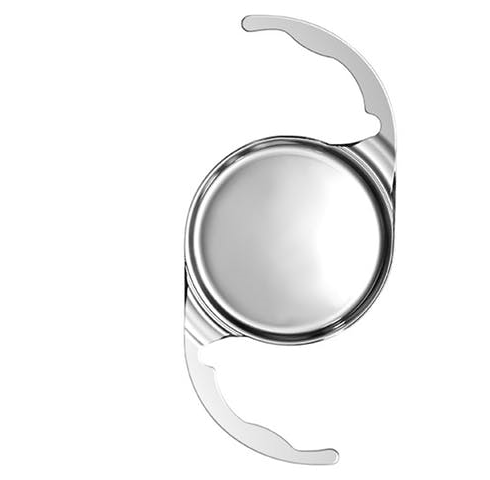
Monofocal lens
These lenses are the most commonly implanted lenses today. They have equal power in all regions of the lens and can provide high-quality vision at a single focal point (usually at distance). They usually require only a light pair of spectacles for optimal distance vision correction and corrective lenses for all near tasks, such as reading or writing.
Toric lens
Toric lenses have more power in one specific region in the lens (similar to spectacles with astigmatism correction in them) to correct astigmatism, which can further improve unaided distance vision for many individuals. Due to the difference in lens power in different areas, the correction of astigmatism with a toric lens requires that the lens be positioned in a very specific configuration. While toric lenses can improve distance vision and astigmatism, they still require corrective lenses for all near tasks, such as reading or writing
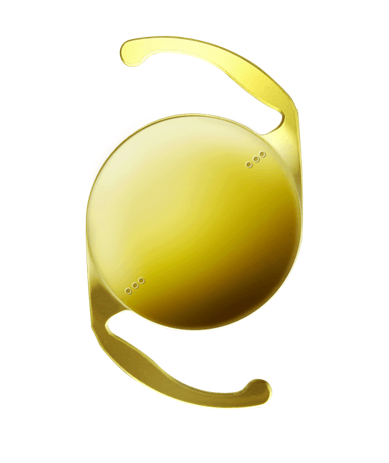

Multifocal lens
Multifocal intraocular lenses have a variety of regions with different power within the lens that allows individuals to see at a variety of distances, including distance, intermediate, and near. While promising, multifocal lenses are not for everyone. They can cause significantly more glare and haloes than monofocal or toric lenses.
Extended depth of focus lenses
The proprietary diffractive echelette design introduces a novel pattern of light diffraction that elongates the focus, resulting in an extended range of vision of about 1.50D—suffi cient to provide full range of vision. In addition, achromatic technology reduces chromatic aberration to boost image quality. Implantation of this lens helps in seeing distance, intermediate distance and near distance with less of glare and haloes.
